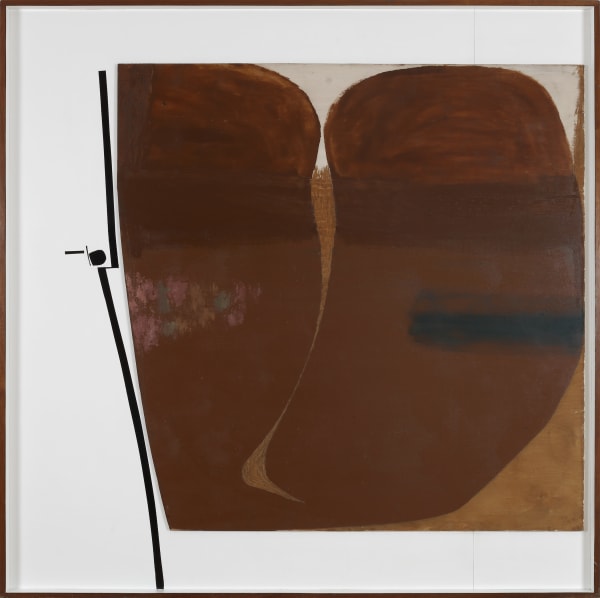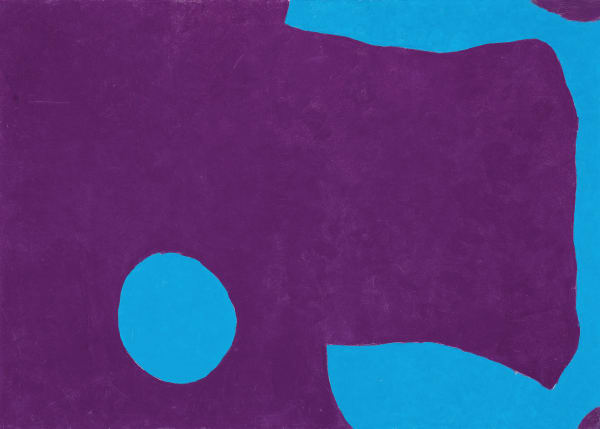Colour is light and sight. This is what sight makes available to you. And that colour has a million varieties and variations. So looking at something – anything – is more interesting than doing anything else, ever, as a matter of fact.– Patrick Heron
Hazlitt Holland-Hibbert represents the Estate of Patrick Heron.
Well-known for his expansive colour-drenched paintings, Patrick Heron (1920-1999) was a luminary of post-war British art. With a grounding in figurative painting, his early works show a keen awareness of light, colour, and tone which developed over the course of his career into a practise centred entirely on these qualities within an abstract realm. Heron’s works are concerned primarily with the act and appearance of painting as referents unto themselves, without representational intent. As such, his approach to abstraction was often purely motivated by the interactions between different tonalities and their respective properties, arguing that colour and shape were inseparable from one another.
Heron was born in Leeds in 1920 but in 1925 moved with his family to West Cornwall, where he would latterly spend most of his adult years. In 1929 the family moved again, to Welwyn Garden City, Hertfordshire, where Heron’s father Tom started Cresta Silks, a company that commissioned artists to design textiles. During the 1930s and 40s, Heron gained some early artistic success designing textiles for the company. Heron studied at the Slade School of Fine Art, London from 1937-39 and, following his studies, worked as an assistant to British ceramicist Bernard Leach in St Ives (1944-45). While working in Leach’s studio, he became friendly with many of the major St Ives artists of the period, including Barbara Hepworth, Ben Nicholson, and Naum Gabo.
Heron’s early paintings gained critical and commercial praise for their rigorous approach, and his first solo exhibition was held at the Redfern Gallery, London in 1947. The influence of the French masters, Pierre Bonnard, Henri Matisse, and Georges Braque can be felt in these abstract-figurative works, particularly in the angular lines and overlapping forms. By the mid-1950s, however, Heron had moved away from figuration to focus more completely on abstraction, which coincided with his return to Cornwall. The Taschiste-like mark making in these works situated Heron alongside some of the most avant-garde painters active in post-war Europe. By the time Heron had his first US solo show at the Bertha Schaefer Gallery, New York in 1960, his paintings were filled in with increasingly independent patches of flat, bright colour, a language that he would continue to explore throughout his career. He would go on to show new works consistently at commercial galleries until the end of his life.
Alongside his own artistic practice, Heron was also a prominent and prolific writer whose texts engaged with the zeitgeist of Modern painting throughout the mid-twentieth century. He was appointed the art critic for The New Statesman between 1947 and 1950 before acting as the London correspondent for the US magazine Arts Digest, New York (later named Arts (N.Y.)) during the late 1950s. Throughout his career he published important scholarship on artists that he admired, notably Ivon Hitchens (1955) and Braque (1956), as well as producing research and theory which underpinned some of his own practice, as seen in The Changing Forms of Art (1955) and The Shape of Colour (1973).
For his painting Heron won the Grand Prize at the John Moores Liverpool Exhibition in 1959 and the silver medal at the São Paulo Art Biennial in 1965. From 1980-87, he was a Trustee of the Tate Gallery, London, which held a major retrospective of his work in 1998. Twenty years later in 2018, Tate St Ives also held a survey show of his work which thereafter travelled to Turner Contemporary, Margate in 2019. Other significant retrospective exhibitions include at the Whitechapel Art Gallery, London (1972) and the Barbican Art Gallery, London (1985).
Heron was awarded a C.B.E. in 1977 and has received Honorary Doctorates from Exeter University (1982), the University of Kent at Canterbury (1986), and the Royal College of Art (1987) amongst others.





